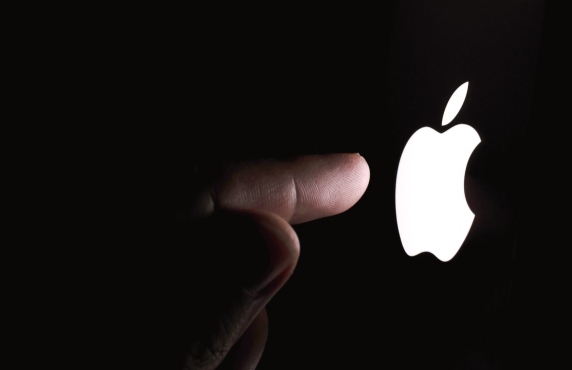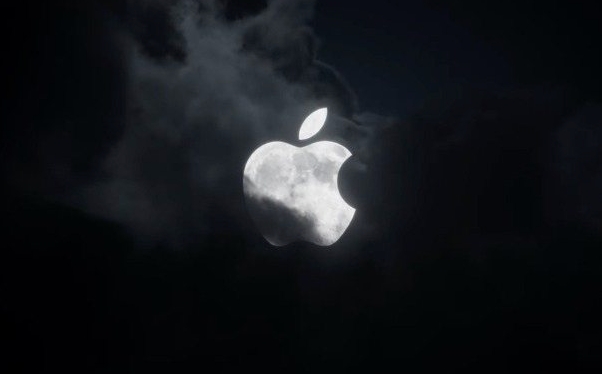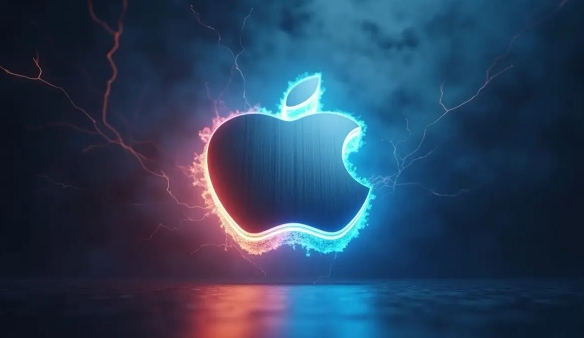 Computer Tutorials
Computer Tutorials
 System Installation
System Installation
 Resolving 'The recovery server could not be contacted' during macOS installation
Resolving 'The recovery server could not be contacted' during macOS installation
Resolving 'The recovery server could not be contacted' during macOS installation
Jul 30, 2025 am 04:56 AMIf you encounter the “The recovery server could not be contacted” error during macOS installation, check your internet connection by testing it on another device or switching to Ethernet, then try Internet Recovery (Option Command R) to download recovery directly from Apple’s servers. If that fails, test a different network or DNS settings via Terminal in Recovery Mode using Google’s public DNS (8.8.8.8), and as a last resort, create a bootable USB installer on another Mac to bypass online verification entirely. These steps address common causes like network blocks, local DNS issues, or incompatible macOS versions, with the bootable installer being the most reliable fix when online methods fail.

If you're stuck on the "The recovery server could not be contacted" error during macOS installation, it usually means your Mac can't reach Apple’s servers to verify or download the OS. This isn’t always about your internet connection—though that’s a common cause. Let’s go over some practical fixes that actually work.

1. Check Your Internet Connection (Yes, Really)
Before diving into complex solutions, confirm your internet is working properly:

- Try loading a website in Safari from another device on the same network.
- If you’re on Wi-Fi, try switching to Ethernet for better stability in Recovery Mode.
- Temporarily disable any firewalls, proxies, or content blockers that might interfere.
You can test your connection directly in Recovery Mode:
- Go to Wi-Fi in the menu bar and re-select your network.
- Enter the password again if needed.
Sometimes just reconnecting helps.

2. Use Internet Recovery Instead of Standard Recovery
If the regular Recovery Mode (Command R) doesn’t work, try Internet Recovery:
- Shut down your Mac.
- Turn it on and immediately hold Option Command R until you see the spinning globe or a progress bar.
This method downloads the recovery system directly from Apple’s servers, bypassing whatever issue local Recovery had. It may take a few minutes depending on your internet speed.
Keep in mind:
- You need an active internet connection for this to work.
- It won’t help if Apple's servers are down or your region is blocked.
3. Try Another Network or Location
Some networks—especially corporate or school ones—block access to Apple’s servers without telling you. If possible:
- Move to a different location with a known good internet connection (like home broadband).
- Use a mobile hotspot as a quick alternative.
Also, try changing DNS settings in Recovery Mode:
- Go to Utilities > Terminal
- Type
networksetup -setdnsservers Wi-Fi 8.8.8.8and hit Enter - Then restart the recovery process
This replaces your default DNS with Google’s public DNS, which sometimes avoids ISP-related blocks.
4. Create a Bootable Installer (Last Resort but Reliable)
If all else fails, create a bootable USB installer on another Mac:
- Get a USB drive (at least 12GB free).
- Download the macOS installer from the App Store (make sure it’s compatible with your Mac model).
- Open Terminal and run:
sudo /Applications/Install\ macOS\ [Version].app/Contents/Resources/createinstallmedia --volume /Volumes/MyVolume
Replace
[Version]andMyVolumewith actual names.
Once created:
- Plug it into the affected Mac.
- Restart while holding Option (Alt), then choose the USB drive to boot from.
This completely skips the need for Apple’s servers during installation since everything is local.
That’s pretty much how to handle the “recovery server could not be contacted” error. Most times, it’s either network related or a mismatch between your Mac and the macOS version you’re trying to install. The bootable installer trick tends to be the most reliable fix when online methods keep failing.
The above is the detailed content of Resolving 'The recovery server could not be contacted' during macOS installation. For more information, please follow other related articles on the PHP Chinese website!

Hot AI Tools

Undress AI Tool
Undress images for free

Undresser.AI Undress
AI-powered app for creating realistic nude photos

AI Clothes Remover
Online AI tool for removing clothes from photos.

Clothoff.io
AI clothes remover

Video Face Swap
Swap faces in any video effortlessly with our completely free AI face swap tool!

Hot Article

Hot Tools

Notepad++7.3.1
Easy-to-use and free code editor

SublimeText3 Chinese version
Chinese version, very easy to use

Zend Studio 13.0.1
Powerful PHP integrated development environment

Dreamweaver CS6
Visual web development tools

SublimeText3 Mac version
God-level code editing software (SublimeText3)

Hot Topics
 Detailed explanation of the installation steps of MySQL on macOS system
Apr 29, 2025 pm 03:36 PM
Detailed explanation of the installation steps of MySQL on macOS system
Apr 29, 2025 pm 03:36 PM
Installing MySQL on macOS can be achieved through the following steps: 1. Install Homebrew, using the command /bin/bash-c"$(curl-fsSLhttps://raw.githubusercontent.com/Homebrew/install/HEAD/install.sh)". 2. Update Homebrew and use brewupdate. 3. Install MySQL and use brewinstallmysql. 4. Start MySQL service and use brewservicesstartmysql. After installation, you can use mysql-u
 How to install AdobeReader on macOS
May 16, 2025 pm 08:33 PM
How to install AdobeReader on macOS
May 16, 2025 pm 08:33 PM
AdobeReader no longer supports macOS, and AdobeAcrobatReaderDC is required. 1) Visit Adobe's official website and download a version suitable for macOS. 2) Open the .dmg file, drag the icon to the "Applications" folder, enter the administrator password and complete the installation. 3) Start Adobe AcrobatReaderDC from the "Applications" folder.
 Fixing the 'Untrusted_Cert_Title' error during macOS installation
Jul 07, 2025 am 01:06 AM
Fixing the 'Untrusted_Cert_Title' error during macOS installation
Jul 07, 2025 am 01:06 AM
To resolve the "Untrusted_Cert_Title" error, you must first make sure to use the official certified installer and create it correctly. Secondly, check whether the system time settings are accurate, then update the firmware and bootstrap, and finally try to install macOS through the network recovery. The specific steps are: 1. Use the official AppStore installer and create a USB installer through Apple tools such as createinstallmedia to avoid manually copying files or using third-party tools; 2. After entering recovery mode, correct the date and time through terminal commands; 3. Check and update the EFI or firmware of the Mac to confirm that the hardware supports the target macOS version; 4. Long press Option Command R to start the network
 macOS could not be installed because the path /System/Installation/Packages/OSInstall.mpkg appears to be missing or damaged
Jul 06, 2025 am 01:04 AM
macOS could not be installed because the path /System/Installation/Packages/OSInstall.mpkg appears to be missing or damaged
Jul 06, 2025 am 01:04 AM
When encountering the prompt "macOS could not be installed because of the path/System/Installation/Packages/OSInstall.mpkgappearstobemissingordamaged", it means that the system installation package is missing or damaged during installation or upgrading macOS, which is common in old version recovery images, third-party boot disks or disk structure abnormalities; solutions include: 1. Confirm whether the boot media is complete, it is recommended to use the official createinstallmedia command to create a boot disk and check whether OSInstall.mpkg exists; 2. Select " from recovery mode"
 How to install macOS on a blank hard drive?
Jul 07, 2025 am 12:32 AM
How to install macOS on a blank hard drive?
Jul 07, 2025 am 12:32 AM
Installing macOS from scratch is not complicated, just prepare the tools and follow the steps. First, prepare a working Mac, at least 16GB USB drive, a stable network connection and sufficient time; secondly, it is recommended to use the createinstallmedia command in Terminal to create a bootable installer; then enter the installation interface through RecoveryMode or USB installer; then use DiskUtility to format the target hard disk as APFS or MacOSExtended; finally follow the prompts to complete the installation process.
 How to install macOS without an Apple ID?
Jul 14, 2025 am 01:19 AM
How to install macOS without an Apple ID?
Jul 14, 2025 am 01:19 AM
You can install macOS without using AppleID, but some functions are limited. There is no need to force login to AppleID during the installation process. You can create a local account to use the basic functions of the system. However, functions such as iCloud synchronization, AppStore download, and search for my Mac require AppleID to enable it. 1. When installing, you can use the USB drive to boot disk or recovery mode to create a local account; 2. Local account can browse web pages, edit documents, program development, and play media, but it is impossible to use iCloud and download most AppStore applications; 3. Skip AppleID to log in for the first time to create a local account; 4. Suitable for computer room equipment, development and testing, and privacy-sensitive users, and it is recommended to bind Apple to long-term use.
 How long does a macOS installation take?
Jul 03, 2025 am 01:06 AM
How long does a macOS installation take?
Jul 03, 2025 am 01:06 AM
AcleanmacOSinstallationtypicallytakes30minutestoanhour,butseveralfactorscanextendtheprocess.1)InternetRecoverymayadd15minutestooveranhourforOSdownload,dependingoninternetspeed.2)Installationtimevariesbetween20–40minutesafterdownloadcompletion.3)Stora
 OpenCore Legacy Patcher for macOS installation guide
Jul 19, 2025 am 01:26 AM
OpenCore Legacy Patcher for macOS installation guide
Jul 19, 2025 am 01:26 AM
If the device is not in Apple's official support list, you can install macOS on old Macs through OpenCoreLegacyPatcher (OCLP). The specific steps are as follows: 1. Confirm the device compatibility, such as MacBookPro, iMac or Macmini around 2012, and check whether the motherboard chipset supports EFI mode; 2. Prepare a 16GB or larger USB drive and make a macOS installation USB drive, write to the image using official commands or third-party tools; 3. Download and run OCLP, select the target device for patch processing, automatically solve the kernel expansion and driver compatibility issues, and manually adjust the patch options if necessary; 4. Insert the patched USB drive, press the Option key when restarting





